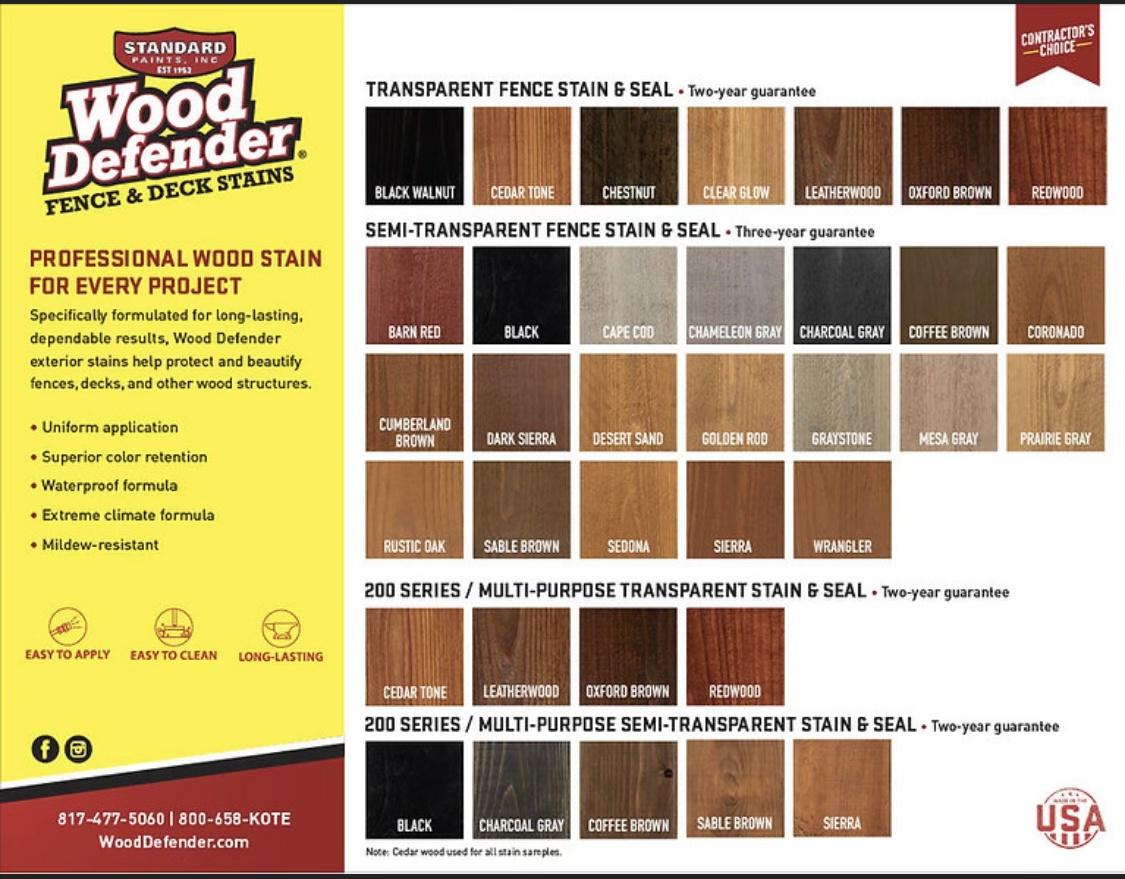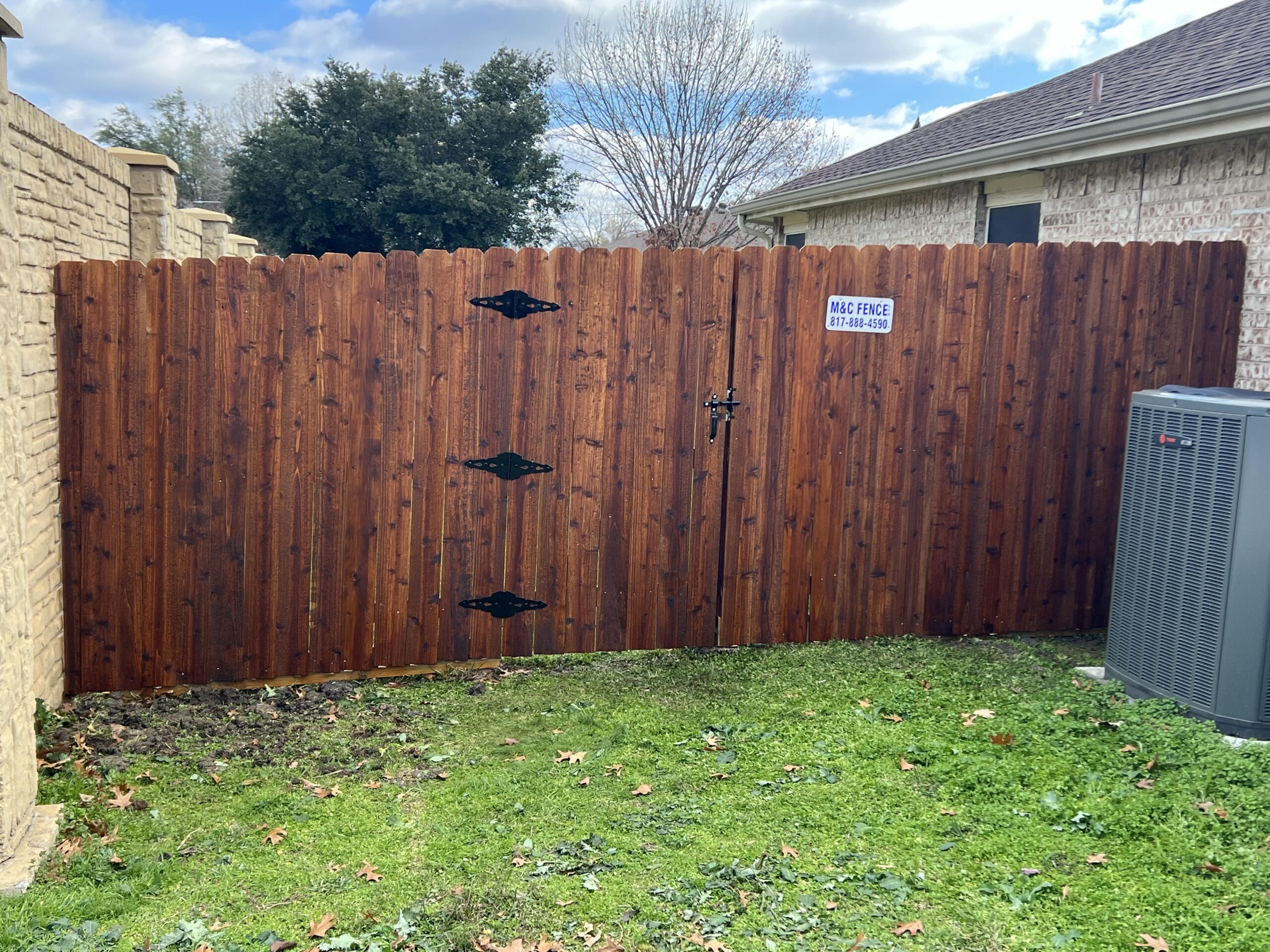Staining your new wood fence can offer numerous benefits that enhance its appearance, durability, and longevity. Here are four reasons why you should consider staining your new wood fence.
Benefits of Staining
Enhanced Aesthetics:Â Staining your wood fence can enhance its visual appeal by adding color and depth to the wood’s natural grain. You can choose from a wide range of stain colors to complement your outdoor decor and landscaping, allowing you to achieve a more cohesive and attractive overall look for your property.
Protection from the Elements:Â The conditions in Texas, such as rain, UV rays, and temperature fluctuations, can cause wood to deteriorate over time. Staining is a protective barrier that helps prevent moisture from infiltrating the wood fibers, reducing the risk of rot, warping, and cracking. UV-blocking stains also shield the wood from sun damage, which can lead to fading and discoloration.
Increased Longevity:Â By effectively protecting your wood fence from moisture and other environmental factors, staining can extend the lifespan of the wood by up to 10 years.Â
Ease of Maintenance:Â Regularly stained wood fences are generally easier to maintain than untreated or painted wood. Stains wear more gracefully than paint, which can chip and peel over time. When it’s time again to stain your fence, roughly every four years, it can often be done without any prep work, such as power washing that removes the hair on the rough-cut wood and leaves lines that show through the stain. This ease of maintenance contributes to the long-term value of your investment.

Preparation Before Staining
Surface preparation is key to making sure the stain you apply adheres to the wood beautifully and stays on for years to come. We recommend spraying your fence with chlorine before staining for several important purposes:
Surface Preparation
Chlorine helps to clean the surface of the fence by removing dirt, grime, mold, mildew, and other contaminants that may have accumulated over time. This ensures that the stain adheres properly to the wood, producing a more even and attractive finish.
Mold and Mildew Prevention
Wood fences are susceptible to mold and mildew growth, especially in damp or humid environments. Chlorine helps kill existing mold and mildew spores and prevents them from regrowing, which can extend the fence’s lifespan and maintain its appearance over time.
Wood Brightening
Chlorine can also help to brighten the appearance of weathered or discolored wood by removing surface stains and restoring its natural color. This can enhance the overall aesthetic of the fence and make it look newer and more appealing.
Stain Penetration
By cleaning the surface of the wood and removing any barriers, such as dirt or mold, chlorine allows the stain to penetrate more deeply into the wood fibers. This promotes better adhesion and penetration of the stain, resulting in a longer-lasting finish that is less prone to peeling or flaking.
Overall, spraying your fence with chlorine before staining is an essential step in the staining process that helps to ensure optimal results in terms of appearance, durability, and longevity. However, it’s essential to follow safety guidelines and manufacturer recommendations when using chlorine, as it can be harmful if not used properly.


